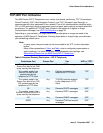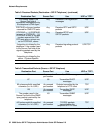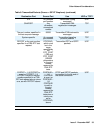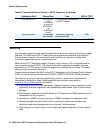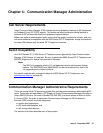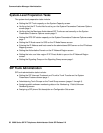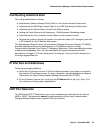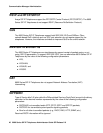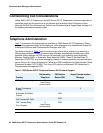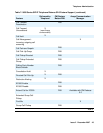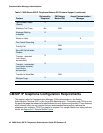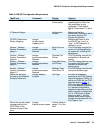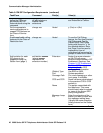
Communication Manager Administrative Requirements
Issue 2 December 2007 39
Call Routing Administration
Call routing administration includes:
● Administering Feature Access Codes (FACs) on the Feature Access Code screen.
● Administering the ARS Digit Analysis Table on the ARS Digit Analysis Table screen.
● Administering the Route Pattern on the Route Pattern screen.
● Adding the Route Pattern to the Numbering - Public/Unknown Numbering screen.
● Administering the Proxy Selection Route Pattern on the Locations screen.
● Allowing the system to identify the location of a caller who dials a 911 emergency call from
a SIP endpoint on the IP Network Map screen.
The Administrator Guide for Avaya Communication Manager (Document Number 03-300509)
provides detailed instructions for administering an IP telephone system on Avaya
Communication Manager. See Chapter 3 “Managing Telephones,” which describes the process
of adding new telephones. Also, you can locate pertinent screen illustrations and field
descriptions in Chapter 19 “Screen References” of that guide. You can find this document on
the Avaya support Web site.
IP Interface and Addresses
Follow these general guidelines:
● Define the IP interfaces for each C-LAN and Media processor circuit pack on the switch
that uses the IP Interfaces screen. For more information, see Administration for Network
Connectivity for Avaya Communication Manager (Document 555-233-504).
● On the Customer Options form, verify that the IP Stations field is set to “y” (Yes). If it is
not, contact your Avaya sales representative.
UDP Port Selection
The 9600 Series SIP IP Telephones use an even-numbered port, selected from the interval
4000 to 10000. The telephones cannot be administered from the Avaya Communication
Manager Network Region form to support UDP port selection.



